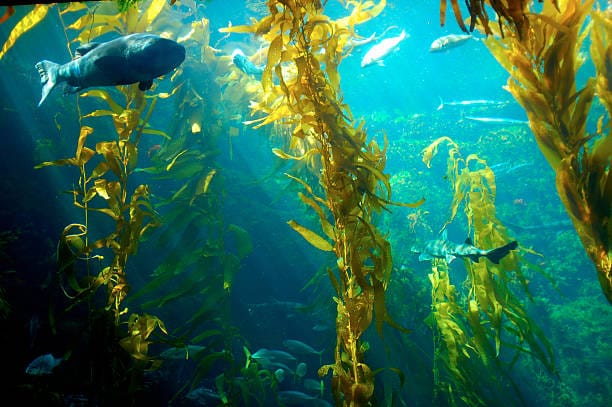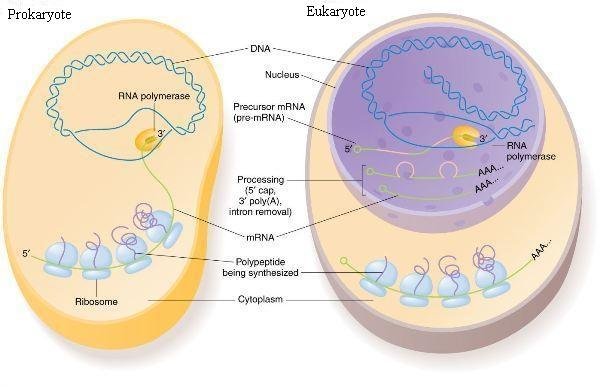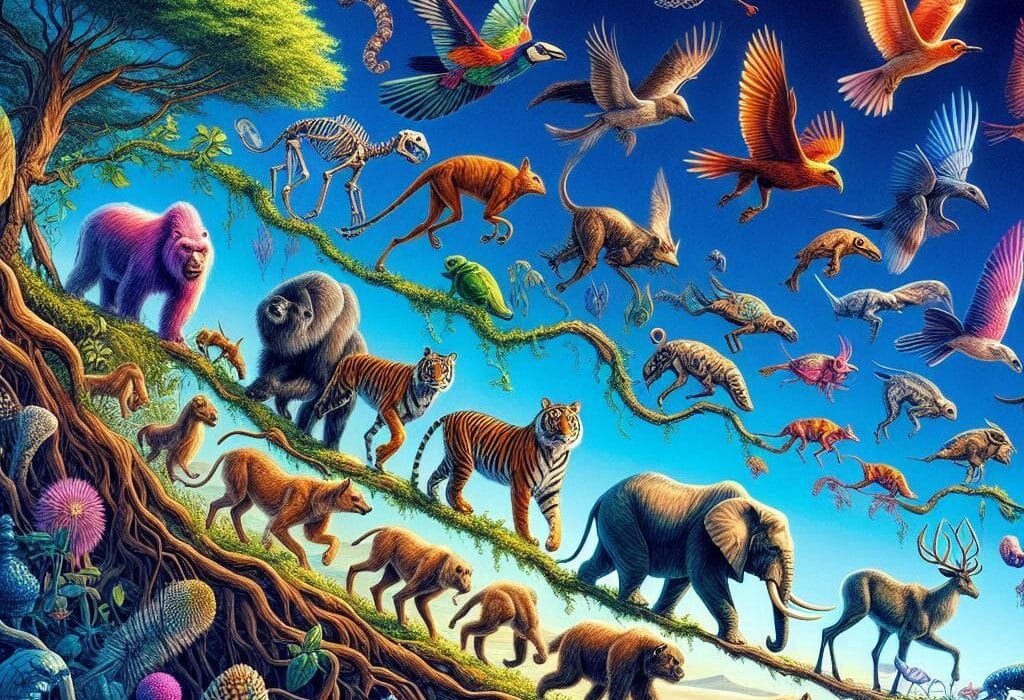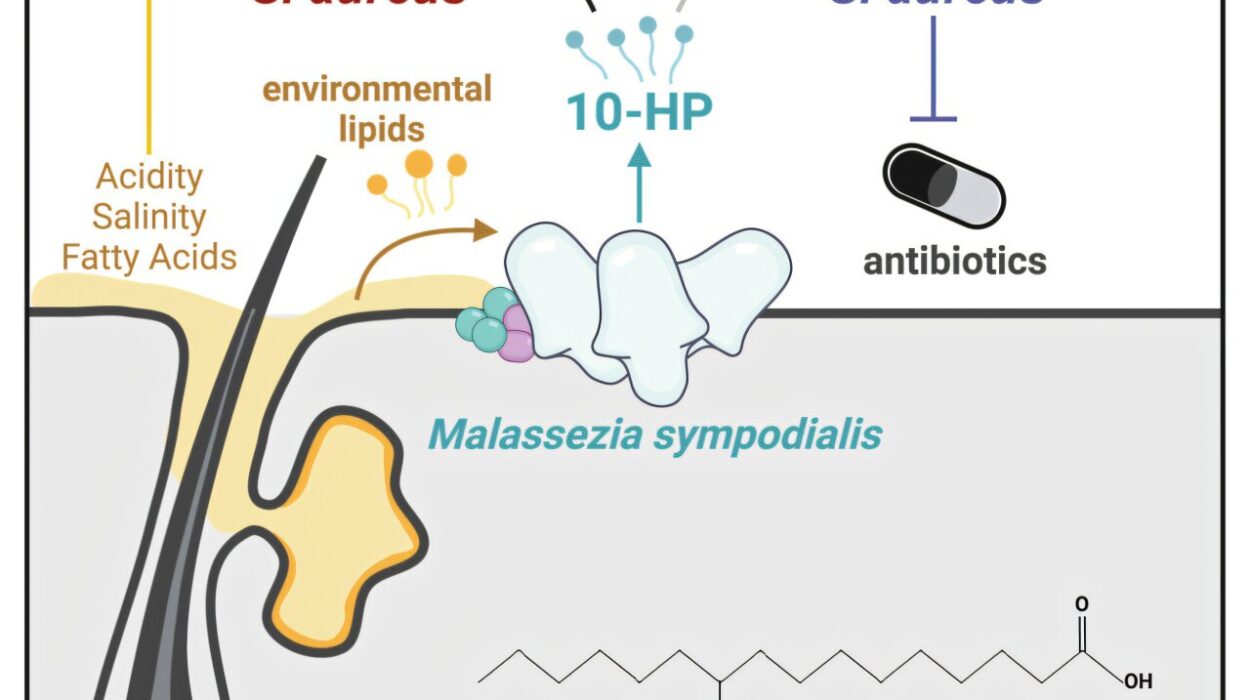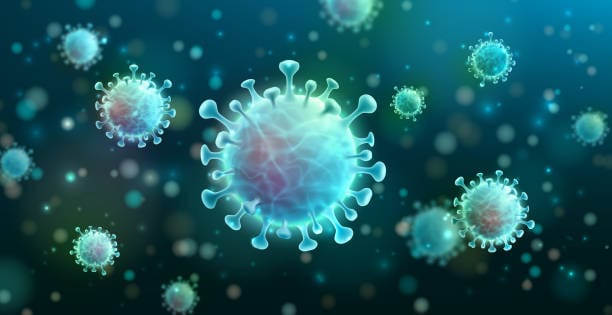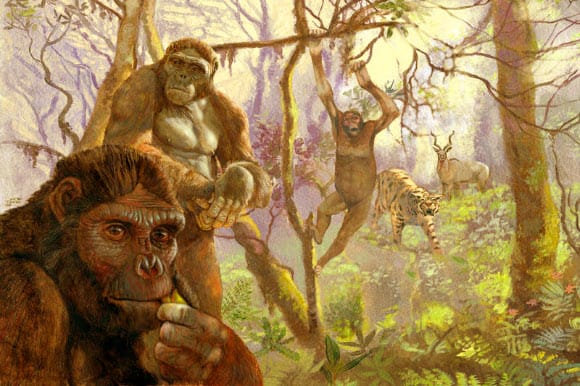Beneath the rippling surface of our planet’s oceans lies a realm that pulses with unseen life. The salty tides cradle not just whales, fish, and coral reefs, but something far more ancient and fundamental—algae. These often-overlooked organisms, drifting in the currents or clinging to rocks, play a role so vital, so immense, that without them, life in the oceans—and indeed, on Earth itself—would collapse into silence.
Algae are not plants, though they photosynthesize. They are not animals, though they can move, hunt, and interact with their environment in surprisingly dynamic ways. They belong to a diverse and complex group of life forms known as protists—a category defined more by what it isn’t than by what it is. Within that definition lies a world of stunning biological creativity. From microscopic diatoms encased in glassy shells to vast blooms of green seaweeds stretching across coastal shelves, algae paint the oceans with color, fuel the food web, and shape the very atmosphere we breathe.
Their story is not just one of biology but of evolution, chemistry, and climate. Algae are among the oldest photosynthesizers on Earth. They’ve survived mass extinctions, shifts in oceans and continents, and dramatic swings in climate. And through it all, they have done something miraculous: they have quietly powered the living world.
The Nature of Algae: Not Quite Plant, Not Quite Animal
Understanding algae means first letting go of strict biological categories. Algae aren’t a single organism or even a single lineage. The term “algae” is used to describe a wide array of photosynthetic protists—organisms that don’t fit neatly into the plant, animal, or fungal kingdoms.
Algae come in many shapes and sizes. Some are single-celled and invisible to the naked eye, drifting in the open ocean as phytoplankton. Others, like giant kelp, can grow to more than 60 meters long, forming dense underwater forests teeming with marine life. Algae can be green, red, brown, golden, or even blue-green. Some are more closely related to plants, while others share features with amoebas or flagellated protozoans.
At their core, what unites algae is their ability to perform photosynthesis—the process of using sunlight to convert carbon dioxide and water into sugars. This biochemical magic, powered by pigments like chlorophyll, fuels nearly all marine life, either directly or indirectly. Unlike land plants, algae don’t have true roots, stems, or leaves, but their bodies are perfectly suited to aquatic life. They absorb nutrients directly from the water, and their structural simplicity allows them to grow rapidly, especially in nutrient-rich conditions.
Some algae live symbiotically with other organisms. Coral reefs, for example, owe their vibrancy and productivity to tiny dinoflagellates—photosynthetic algae called zooxanthellae—that live inside coral polyps. This partnership, delicate and profound, allows coral reefs to thrive even in nutrient-poor tropical waters.
The Origins of Oceanic Powerhouses
Algae’s evolutionary history stretches back more than two billion years, making them among the oldest living lineages on Earth. Their ancestry is tangled, marked by a phenomenon called endosymbiosis—a process in which one organism engulfs another, and instead of digesting it, the two form a lasting partnership.
According to this theory, an ancient ancestor of today’s algae engulfed a photosynthetic bacterium—likely a cyanobacterium. Instead of destroying it, the host cell kept the bacterium alive, and over millions of years, it evolved into a chloroplast—the photosynthetic engine found in algae and plants today.
But the story doesn’t end there. Different lineages of algae have acquired chloroplasts from different sources, through multiple rounds of endosymbiosis. This explains why some algae have chloroplasts surrounded by two membranes, while others have three or four. These layers are the fossilized evidence of ancient mergers—an echo of life’s creativity in adapting, surviving, and thriving.
Green algae, red algae, and glaucophytes are thought to descend from the first wave of primary endosymbiosis. Later, red and green algae were themselves engulfed by other protists, leading to the creation of complex lineages like brown algae, diatoms, and dinoflagellates. It’s an evolutionary web that defies simplicity, a reminder that life’s journey is rarely linear.
Algae and the Chemistry of Life
Algae do more than just photosynthesize—they rewrite the chemical dynamics of the planet. Through their daily work, they absorb vast amounts of carbon dioxide, regulate oxygen levels, and serve as the foundation for marine ecosystems.
Phytoplankton, the microscopic algae that drift in sunlit waters, are especially important. Though they make up less than 1% of the global plant biomass, they are responsible for producing nearly half of Earth’s oxygen. Every second breath you take is thanks to these tiny, floating organisms. When they photosynthesize, they absorb CO₂ from the atmosphere and release O₂ as a byproduct. In doing so, they act as a natural carbon sink, helping to stabilize the climate.
When algae die, they sink to the ocean floor, carrying their stored carbon with them. This process—known as the biological carbon pump—is one of the most important natural systems for long-term carbon sequestration. Without it, atmospheric CO₂ levels would be far higher, and Earth’s climate would be drastically different.
But algae don’t just interact with carbon. Some produce essential nutrients like nitrogen and phosphorus. Others form the base of the food web, feeding zooplankton, which in turn nourish fish, whales, and seabirds. The chemical richness of algae helps drive the fertility of the oceans and supports a biodiversity that spans from microscopic life to the largest animals on the planet.
The Bloom and the Bust: When Algae Take Over
Algae are often benevolent, but they can also become dangerous. Under certain conditions—especially when excess nutrients like nitrogen and phosphorus flood the water from agricultural runoff or sewage—algae can grow explosively in what’s known as a bloom.
These algal blooms can cover vast areas and turn the water red, green, or brown. Some produce toxins that poison fish, shellfish, birds, and even humans. These harmful algal blooms, or HABs, are increasing worldwide due to climate change and human pollution. They can devastate fisheries, close beaches, and disrupt entire ecosystems.
Dinoflagellates, a group of algae with flagella that allow them to move, are among the most notorious bloom-formers. The phenomenon of “red tides” is often caused by these species. While not all red tides are toxic, some release neurotoxins that accumulate in shellfish and can cause severe illness in people who eat them.
Yet even these dangerous blooms are part of algae’s ecological complexity. They remind us that algae are not passive background actors, but active players in marine environments—responsive to changes in temperature, nutrient levels, and light. Their behavior is both a warning and a reflection of the shifting balance of ocean life.
Forests of the Sea: The Great Brown Algae
While phytoplankton drift with the currents, some algae anchor themselves to the seafloor and grow to astonishing sizes. The giant kelp forests of the Pacific coast, composed of brown algae, are among the most productive and biodiverse ecosystems on Earth. Towering up to 30 meters high, these underwater forests provide food, shelter, and nursery grounds for countless species.
Giant kelp grows at a phenomenal rate—up to half a meter per day—using gas-filled bladders to float its fronds toward the sunlight. Beneath these floating canopies, a shadowed world thrives. Sea otters crack open shellfish on their bellies, fish dart through the fronds, and crustaceans scuttle along the rocky bottom.
These brown algae are masters of adaptation. They’ve evolved a unique pigment called fucoxanthin, which allows them to harvest light efficiently in the blue-green wavelengths that dominate underwater environments. Their complex life cycles and reproductive strategies allow them to rapidly colonize new areas, yet they are vulnerable to warming waters and changing currents.
Kelp forests also buffer coastlines against storms, filter pollutants, and even reduce ocean acidification in their immediate environment. They are engineers of the sea, and their well-being is closely tied to the health of the oceans.
Red and Green: A Kaleidoscope of Adaptations
While brown algae dominate temperate coasts, red and green algae thrive in other corners of the marine world. Red algae, with their brilliant hues, are common in tropical reefs and deep waters. Their pigment, phycoerythrin, allows them to absorb blue light and photosynthesize at greater depths than most algae.
Some red algae secrete calcium carbonate and contribute to reef-building, acting as living cement that binds coral structures together. Their resilience and biochemical diversity have also made them important to humans. Species like Porphyra (nori) are cultivated for food in East Asia, while others are used to produce agar and carrageenan—compounds used in everything from food products to pharmaceuticals.
Green algae, on the other hand, are the evolutionary cousins of land plants. Their chloroplasts and cellular structures are remarkably similar to those found in trees, grasses, and flowers. In fact, it’s widely believed that land plants evolved from a lineage of green algae over 500 million years ago.
Today, green algae still populate shallow, sunlit waters, freshwater lakes, and even symbiotic partnerships with fungi to form lichens. Their adaptability makes them key indicators of environmental health, as they respond quickly to pollution, temperature changes, and nutrient shifts.
Algae and the Web of Life
The influence of algae extends far beyond their physical presence. They are intricately connected to the rhythms of life in the ocean. From the smallest copepod to the largest blue whale, marine organisms rely on algae either directly or through complex food chains.
Zooplankton, the tiny animals that drift alongside phytoplankton, feed on algae and are themselves preyed upon by fish larvae, crustaceans, and jellyfish. Larger predators, such as tuna, seabirds, and marine mammals, depend on this base of primary production. A single bloom of diatoms can trigger a cascade of energy that sustains entire ecosystems for weeks.
Even deep-sea environments, where light never reaches, are affected by algae. When surface algae die and sink, their organic matter becomes food for scavengers and decomposers in the abyss. This vertical movement of carbon and nutrients ties the sunlit surface to the darkest ocean trenches.
Algae also influence the migration patterns of animals, the breeding cycles of fish, and the behavior of ocean currents. They are not isolated organisms, but threads in a vast and living tapestry that stretches from the equator to the poles.
The Human Connection: From Industry to Innovation
Humans have long relied on algae, even if we’ve not always recognized their importance. Coastal communities have harvested seaweeds for food, fertilizer, and medicine for centuries. In modern times, algae have found applications in biotechnology, biofuels, cosmetics, and even space exploration.
Microalgae are being cultivated to produce omega-3 fatty acids, biodegradable plastics, and hydrogen fuel. Their ability to rapidly grow in closed systems with minimal inputs makes them attractive as a sustainable resource. Algae can also clean wastewater, absorb heavy metals, and capture carbon dioxide more efficiently than trees.
Scientific interest in algae has exploded in recent decades, not just for their ecological importance but for their potential to solve global challenges. With climate change, food insecurity, and environmental degradation looming large, algae may offer tools for resilience and renewal.
Yet this promise is not without caution. Large-scale algal cultivation must be managed carefully to avoid ecological disruption. Genetic engineering of algae opens new possibilities but also raises ethical and environmental questions. As with all powerful technologies, wisdom and responsibility must guide innovation.
Fragility in a Warming World
Despite their resilience, algae are vulnerable to the pressures of a changing climate. Rising sea temperatures, ocean acidification, and pollution are altering the dynamics of algal populations around the globe.
In some areas, warming waters have caused harmful algal blooms to become more frequent and intense. In others, coral bleaching—a result of stressed zooxanthellae abandoning their coral hosts—has devastated entire reef systems. Kelp forests are retreating in places like Australia and California, replaced by urchin barrens and invasive species.
These changes are not just losses of beauty—they are losses of function, of biological services that sustain fisheries, protect coastlines, and regulate the planet’s climate. Algae are both indicators and victims of environmental change. Their health mirrors the health of the ocean, and by extension, the health of humanity.
Awe, Wonder, and Urgency
Algae are often invisible, yet they are among the most important organisms on Earth. They blur the boundaries between simplicity and complexity, between ancient origins and future innovation. They remind us that power can lie in the smallest forms, that entire ecosystems depend on invisible engines humming beneath the waves.
To understand algae is to glimpse the profound interconnectedness of life. Their story is not just one of science, but of beauty, of struggle, of balance. They are quiet architects of the biosphere—unheralded, unglamorous, but essential.
As we face a century of ecological transformation, algae offer both hope and warning. They can help us rebuild, adapt, and thrive—but only if we listen. Only if we act.
The oceans sing a song written in light, chemistry, and time. Algae are the instruments of that song, tuning the Earth’s rhythms for billions of years. It is time we learned the melody—and joined the chorus.
